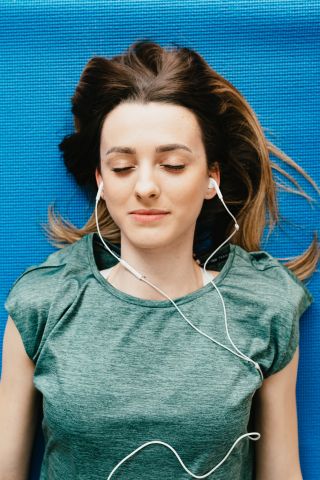KEY POINTS-
- Mindfulness can be as effective as medication to treat anxiety in some cases.
- A regular mindfulness practice can lower anxiety and stress.

A new research study published in JAMA Psychiatry has found that eight weeks of a weekly mindfulness program can be as effective as the medication escitalopram, a type of selective serotonin reuptake inhibitor, in treating anxiety.
The recent randomized clinical trial compared the effectiveness of the structured program mindfulness-based stress reduction (MBSR) with escitalopram (brand name Lexapro), a common medication used to treat anxiety disorders.
The trial involved 276 adults diagnosed with anxiety disorders. Participants were randomly assigned to either an 8-week mindfulness course or flexible dosing of escitalopram.
Researchers found that the mindfulness program was as effective as escitalopram in reducing anxiety levels. Importantly, there were also fewer dropouts from the mindfulness program: No participants in the mindfulness group dropped out of the study, compared to 8% in the medication group who dropped out due to an adverse event.
This study provides further evidence that a mindfulness-based approach can be a safe and effective treatment option for individuals with anxiety disorders and serve as a viable alternative or complement to medication.
Mindfulness practices can include yoga, meditation, tai chi, mindful walking, and breathing skills. The benefits of regular practice of mindfulness include:
- It cultivates present-moment awareness and nonjudgmental acceptance, allowing individuals to observe their anxiety with self-compassion and reduce its impact on their daily lives.
- It fosters a sense of connectedness and allows individuals to find joy in the present moment.
- It develops skills to reduce their anxiety using acceptance, self-awareness, and self-compassion.
- It empowers individuals to take an active role in managing their anxiety.
- It rewires the brain through neuroplasticity and improves emotional regulation and long-term resilience and reduces anxiety.
- Accessible and low- to no-cost options are available including free mindfulness resources online.
It is important to note that mindfulness may not be able to replace medications for everyone. A combined approach that integrates medication options, mindfulness, and psychotherapy is often highly effective. Mindfulness offers a viable alternative or complementary option to medication-based treatments for anxiety.
Body Scan Exercise
Try practicing mindfulness with this body scan exercise or listen to the Body Scan audio from UCLA's free guided meditation collection. This practice can take 5 to 15 minutes, and be done at least 3 times a week. Many people prefer to practice this before they sleep as part of a nighttime routine. Research suggests that people who practice the body scan for longer reap more benefits from the practice.
- Begin by finding a place where you can feel safe. You can be seated upright or lying down, whichever is most comfortable for you.
- Bring your attention to your body and any sensations in your body today.
- You have the option to close your eyes if that’s comfortable for you or maintain a soft gaze a few feet in front of you.
- If you are seated, notice how it feels for your body to be seated. How does the chair or the floor feel beneath you? If you are lying down, notice how your body feels resting on the surface beneath you.
- Take a few deep, long breaths inhaling through your nose and exhaling through your mouth. Feel the air going in and out of your body.
- Bring your attention to your feet: Notice any sensation in your feet (e.g., weight and pressure, vibration, temperature). Inhale and imagine the breath flowing through your nose. Exhale and allow your feet be heavy and grounded.
- Next, bring your attention to your legs—your knees, calves, and thighs. Inhale and imagine the breath flowing through your nose all the way through your legs. Exhale and let your legs be heavy and relaxed.
- Notice your stomach area. Notice any tension or tightness held there. Take a deep breath in. Exhale and let your stomach area soften.
- Bring your attention to your chest. Notice any tension or tightness held there. Take a deep breath in and imagine the breath filling the chest. Exhale and let your chest area soften and relax.
- Notice your hands. Inhale and imagine the breath flowing through your body and into your hands. Exhale and let your hands soften.
- Notice your arms. Inhale and imagine the breath flowing to your arms. Exhale and allow your arms to soften.
- Notice your neck and throat. Inhale and imagine the breath flowing to fill those spaces. Exhale and let your muscles relax.
- Bring your attention to your jaw. Stress is often stored there in the form of a tense jaw. Allow your jaw to soften and relax any gripping.
- Now, notice your entire body. Take one deep whole-body breath, and imagine your breath flowing in from the top of your head all the way through your body. Exhale and imagine the breath flowing out through the bottoms of your feet. Let your whole body relax and feel grounded.
- Do this whole-body breath again for two to five cycles.
- You can stay here as long as you feel comfortable. When you feel ready, open your eyes if they are closed. Gently wiggle your fingers to wake your body up. You have now completed your mindfulness practice for the day.


